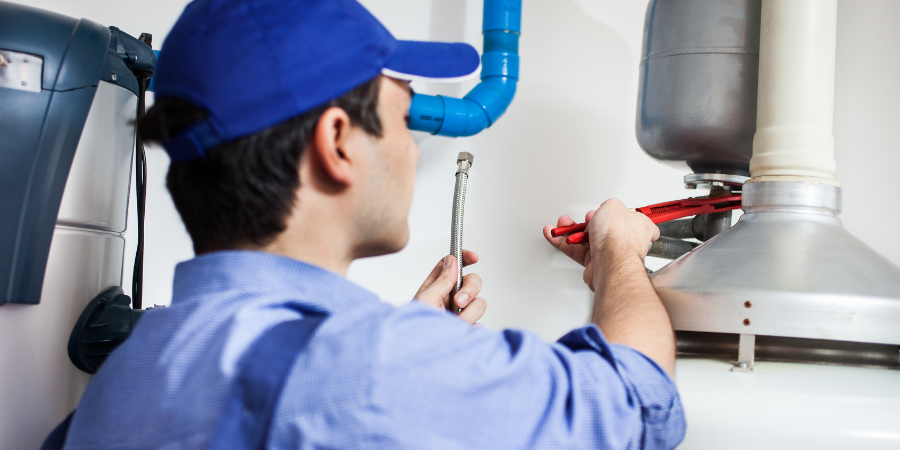Gas Or Electric?
If you’re looking to install a tankless water heater, you’ll need to be aware of a few considerations.
First, there are both gas and electric models available. If you choose the gas option, be aware that the unit will need a 1-inch supply line and will also need to be vented outside using category II stainless steel exhaust pipes with tightly sealed silicon joints. If the installation is in a cold-weather region, a damper should also be installed to keep cold air from returning to your home. Additionally, depending on the make and model of your water heater, a condensate drain connected to a sink or floor drain should be considered to collect and eliminate condensation.
This unit requires a 120-volt circuit that can be plugged in or can be directly patched into the service panel.
One of the cost-effective advantages of an electric heater is that they do not require venting. This unit can also be plugged in or connected directly to a 240-volt circuit.
With either option, make sure your current gas and/or electric service can accommodate your new water heater and make necessary upgrades as needed!
First Things First
Your old water heater may be inefficient and it’s time to upgrade. The first step is to remove your old water tank. Shut off the two valves (inlet and outlet) using channel-type pliers or pipe wrenches. If it is a gas unit, shut off the gas feed and disconnect the gas line. Open the drain valve at the base of the unit and empty the water inside the water heater. An electric unit has a 240-volt power and should be disconnected by a certified electrician. Remove and discard old units.
Now you’re ready for your new tankless water heater! The next step is to determine where you want to install it—you’ll want it close to an electrical outlet so you can easily connect it once you’ve installed it.
Installing the New Water Heater
The first thing you’ll need to do is remove the old model. You can do this by turning off the power to the unit and then opening up the gas valve or the electric shutoff switch. If you’re replacing a gas unit with an electric one, turn off the gas valve at this point as well. Be sure to wear safety goggles and gloves when handling any hot parts so that you don’t get burned.
Next, disconnect all hoses going into your old heater and disconnect them from each other as well. You may also need to remove any pipes connecting your house’s plumbing system with the old heater if they are not part of your new system’s installation instructions (this will depend on whether or not they have been replaced).
Now we move on to positioning our new tankless model in place: once you’ve disconnected all hoses from each other (as well as any connections between your house’s plumbing system), set down your new heater in its designated location. Be sure that it fits snugly against both walls—you may need some help with this step!
In Conclusion
Replacing your water heater can be a simple DIY project if you have the right tools and know-how. As a result, a tankless system, when properly installed, can save energy, money, and time when it comes to all things hot water!
Ready to replace your water heater, but don’t know where to start? Contact us today! We are tankless water heater specialists in Vista, North County.






